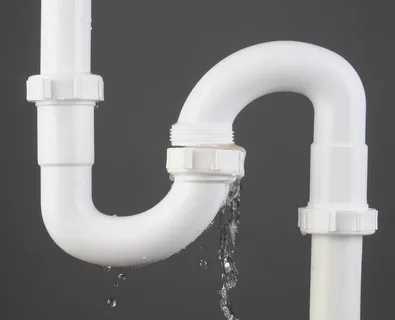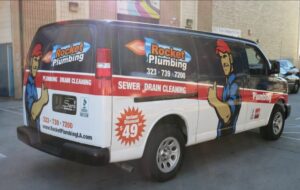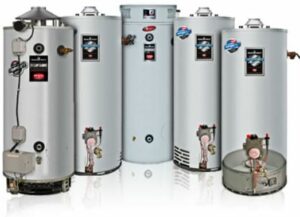If you work with PVC, chances are you will find yourself in a situation where you need to fix a leaky PVC pipe. You may have asked yourself how you could fix a leaky PVC pipe without cutting it? There are many ways you can go about fixing a leaky PVC pipe. Four temporary solutions to repair a leaking PVC pipe are to cover it with silicone and rubber repair tape, wrap it with rubber and secure with hose clamp, bond it with repair epoxy, and cover it with fiberglass wrap. Keep reading to find out more about these leaky pipe solutions.
Repair a PVC Leak with Silicone and Rubber Repair Tape
Rubber and silicone repair tape is a simple solution if you’re dealing with a minor leak. Rubber and silicone tape comes in a roll that you can wrap directly around the PVC pipe. The repair tape adheres directly to itself rather than adhering to the PVC pipe. Identify the leak, then wrap the tape around the leak covering a little bit to the left and a little bit to the right of the leak so that the entire leak area is covered. The tape uses compression to fix the leak, so you want to make sure your wrap is tight and secure. Before putting away your tools, observe your repair to ensure the leak has been fixed.
Secure the Leak with Rubber & Hose Clamps
Some pipe repairs are meant to only be temporary fixes for small leaks. One such solution is using rubber tape and hose clamps. As the leak grows, this repair will become less effective but it is a great temporary fix while gathering materials for a more permanent solution. For this repair, find the damaged area, wrap rubber around that area, place the hose clamps around the damaged area, then tighten the hose clamps around the rubber to stop the leak.
Use Repair Epoxy for PVC Pipe and PVC Pipe Joint Leaks
Repair epoxy can be used to repair leaks on PVC pipe and PVC pipe joints. Repair epoxy is a viscous liquid or putty. Follow the manufacturer’s directions for preparing the putty or liquid epoxy before beginning.
To repair your PVC pipe or joint leak, clean and dry the damaged area ensuring that water or other liquids cannot reach the affected area because this could compromise the repair. Now, apply the epoxy to the damaged pipe or PVC joint according to the manufacturer’s instructions and let it cure for 10 minutes. Once the curing time period has elapsed, let water move through the pipe and check for any leaks.
Cover the Leak with Fiberglass Wrap
There are two types of fiberglass wrap solutions. The first solution is fiberglass resin tape. Fiberglass tape works by using a water activated resin that hardens around the pipe to slow the leak. While fiberglass tape can repair the leak, it is still a temporary solution. To make the repair using fiberglass resin tape, clean around the leak on the pipe using a damp cloth. While the pipe is still wet, wrap the fiberglass tape around the damaged area and let the resin harden for 15 minutes.
The second solution is a fiberglass resin cloth. The fiberglass resin cloth can be used for a more permanent solution, but it is still a temporary repair. Before using the fiberglass cloth, clean the pipe around the leak, then lightly sand the surface. Lightly sanding the surface will create a more adhesive surface for the cloth. Now the fiberglass resin cloth can be placed over the leak. Finally, shine a UV light directly onto the pipe, this will begin the curing process. After about 15 minutes, the curing process should be complete. At this time, you can test your repair.
Leaky PVC Pipe Repaired
The best solution for how to repair a leaky PVC pipe or PVC pipe joint is always to replace the pipe or the fitting. If you are in a situation where a complete repair is not an option or you’re waiting on parts to arrive using silicone or rubber tape, rubber with hose clamps, repair epoxy, or fiberglass wrap are all great temporary solutions for repairing a PVC pipe leak. To prevent unforeseen damage, if it’s possible to shut off the water until a full repair can be made, we recommend leaving the water off. With so many options for fixing a leaking PVC pipe without cutting, you’ll be able to quickly repair any problem areas.









